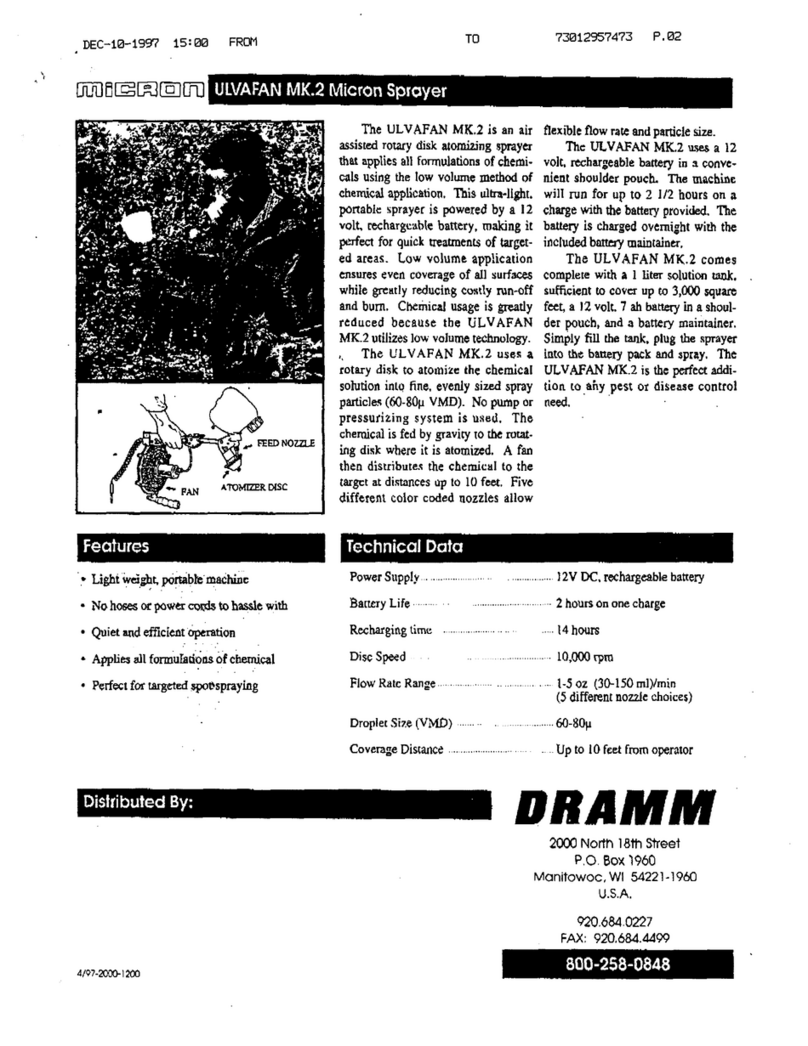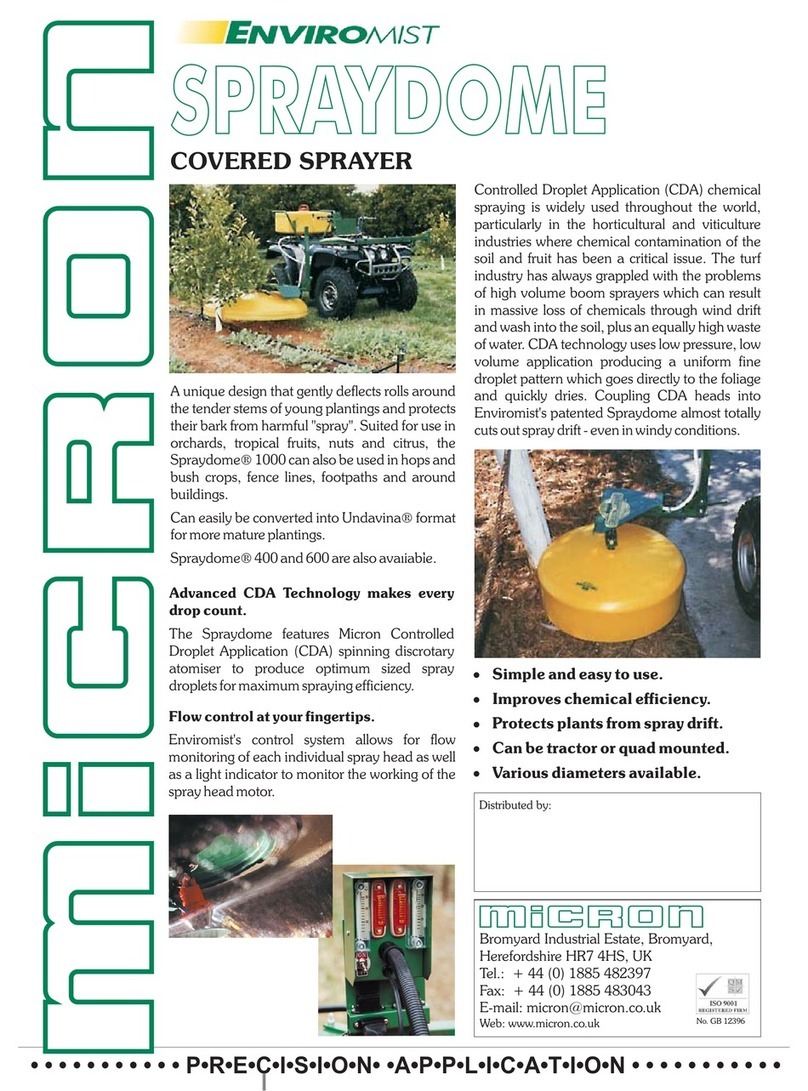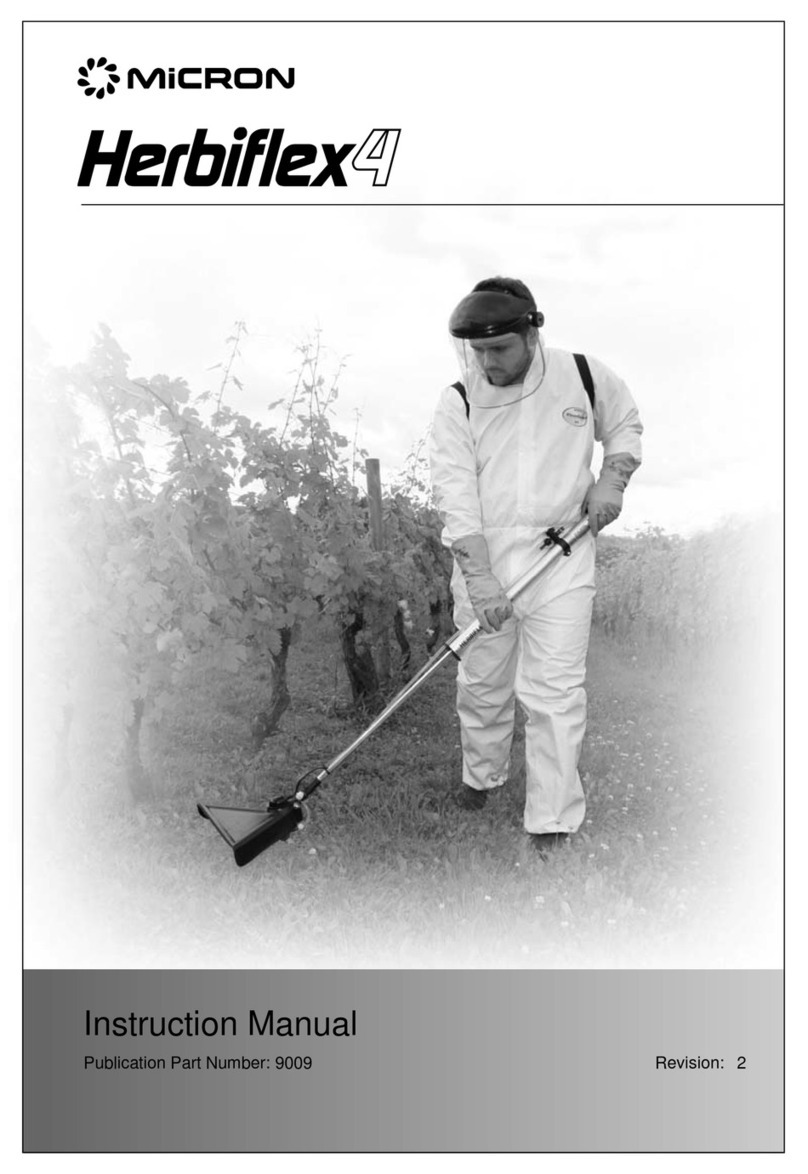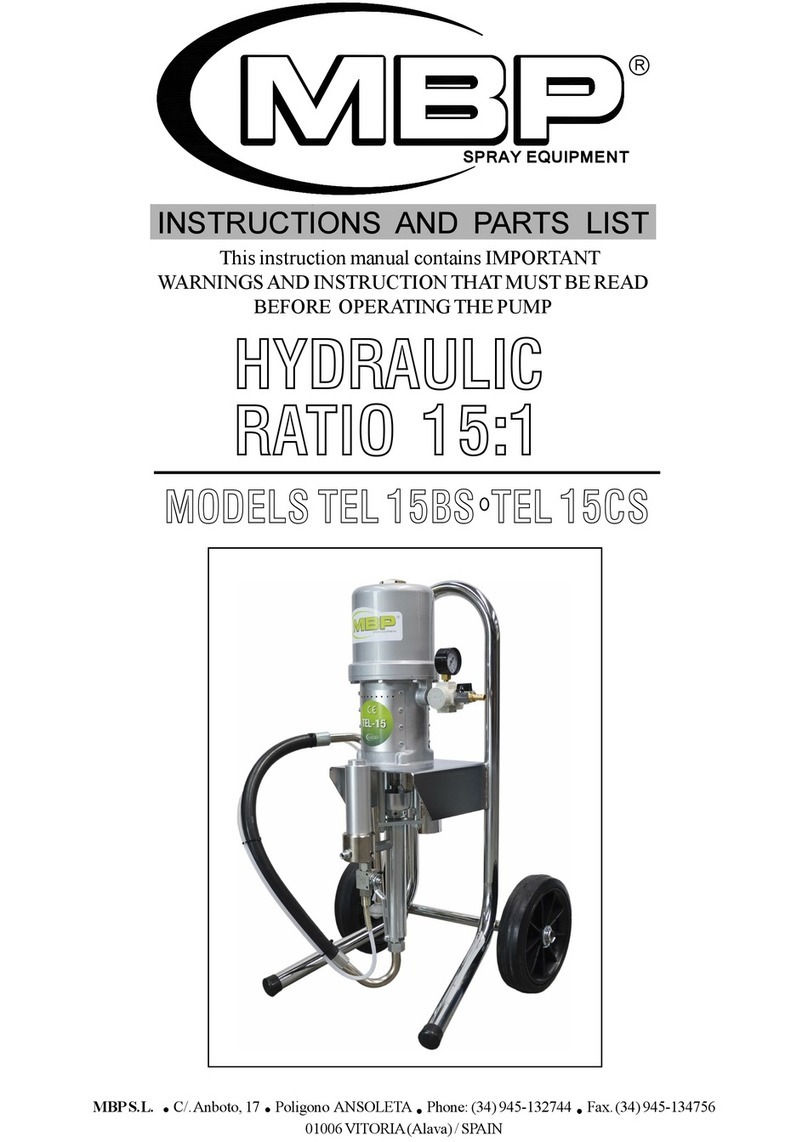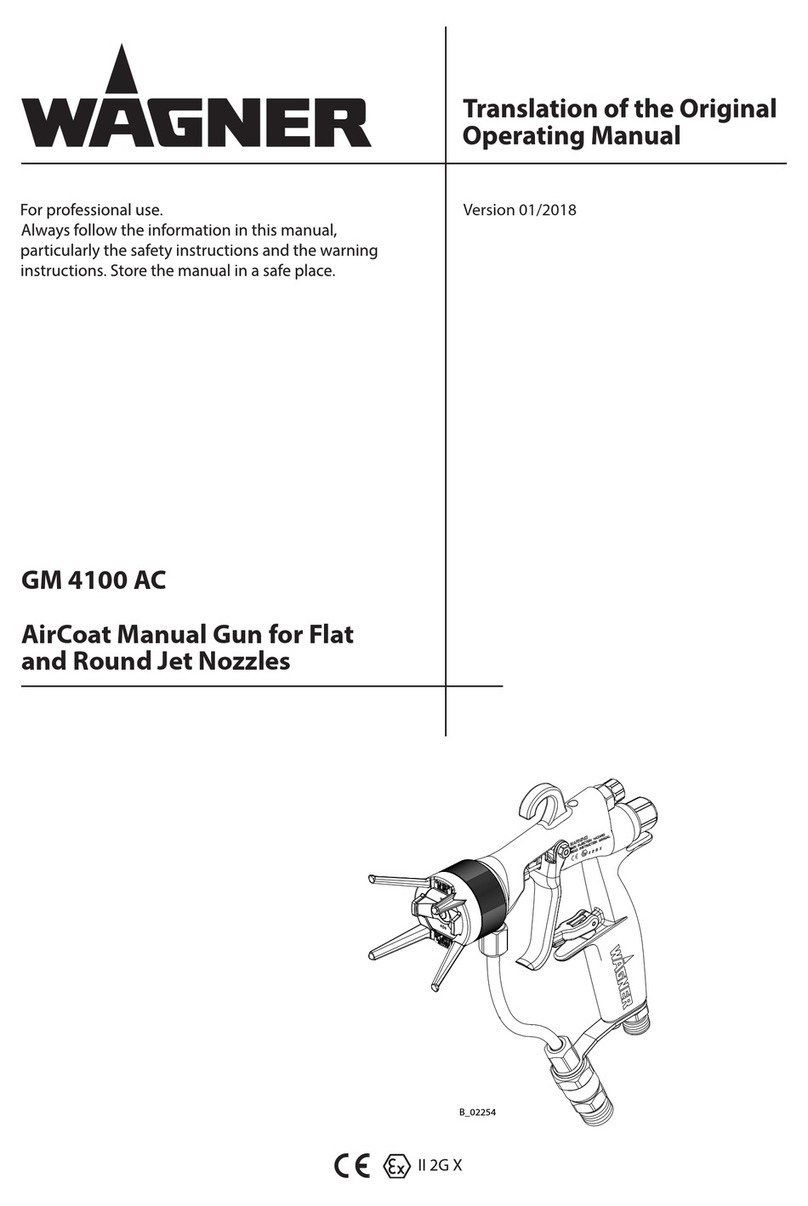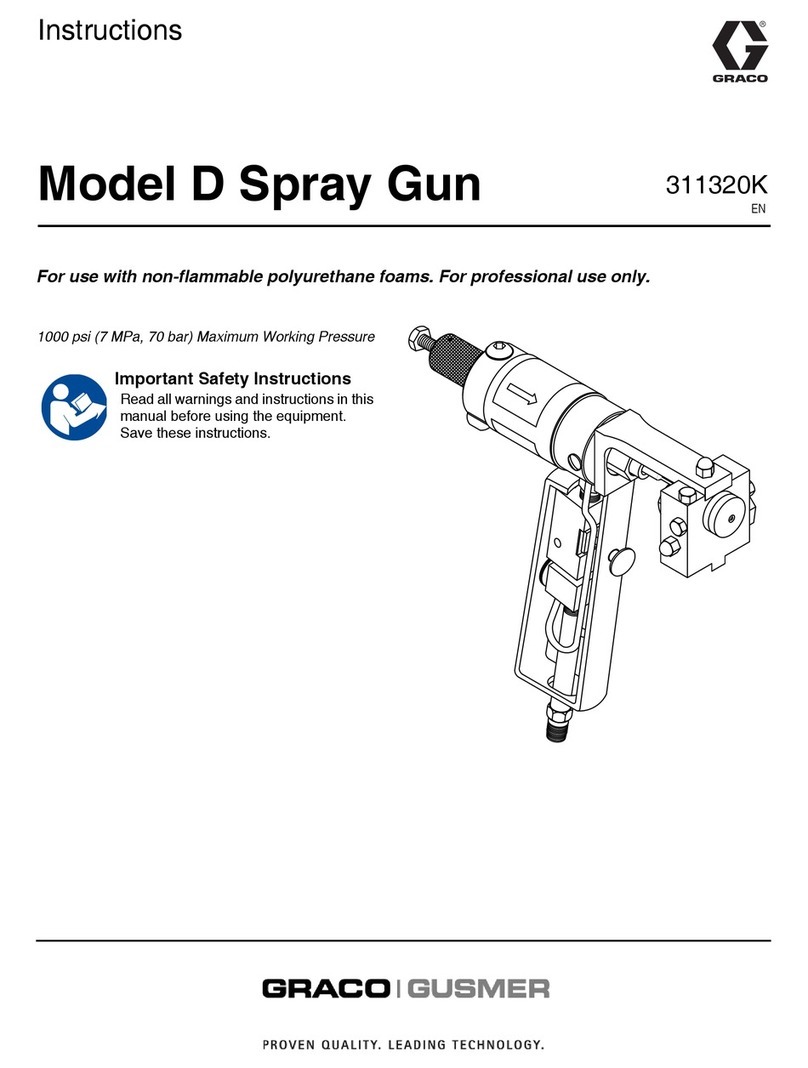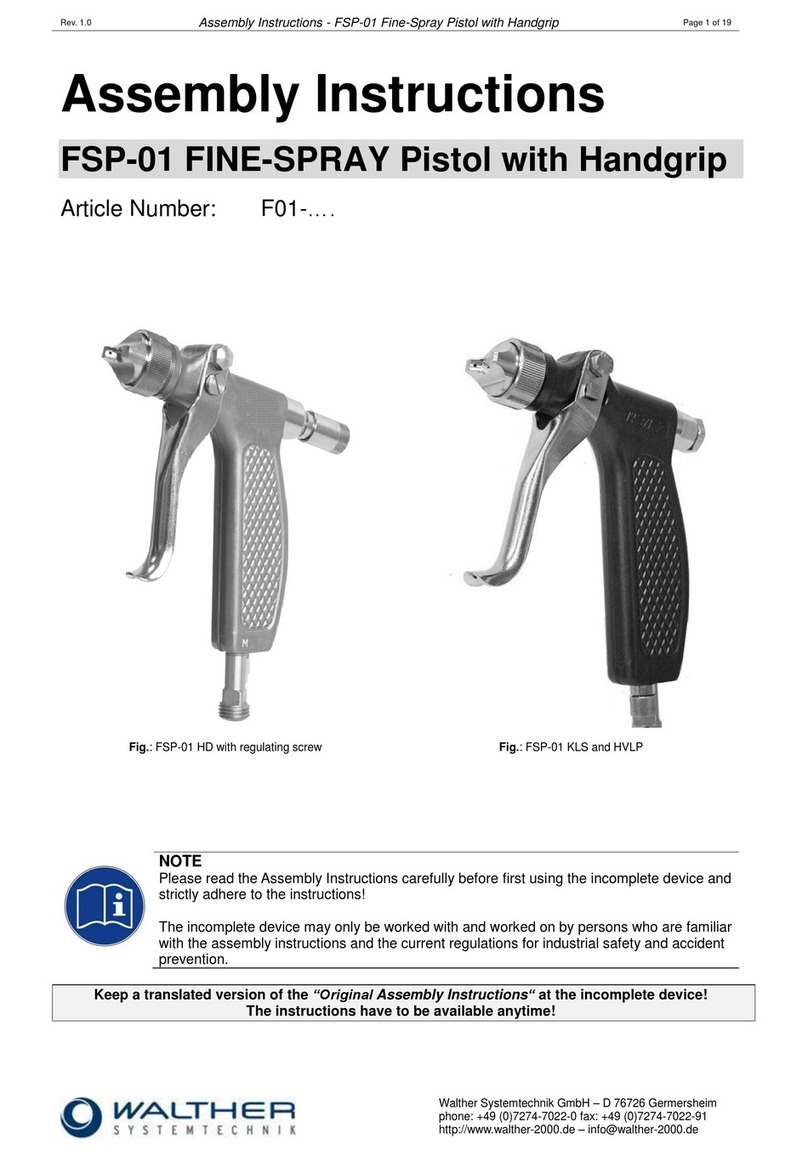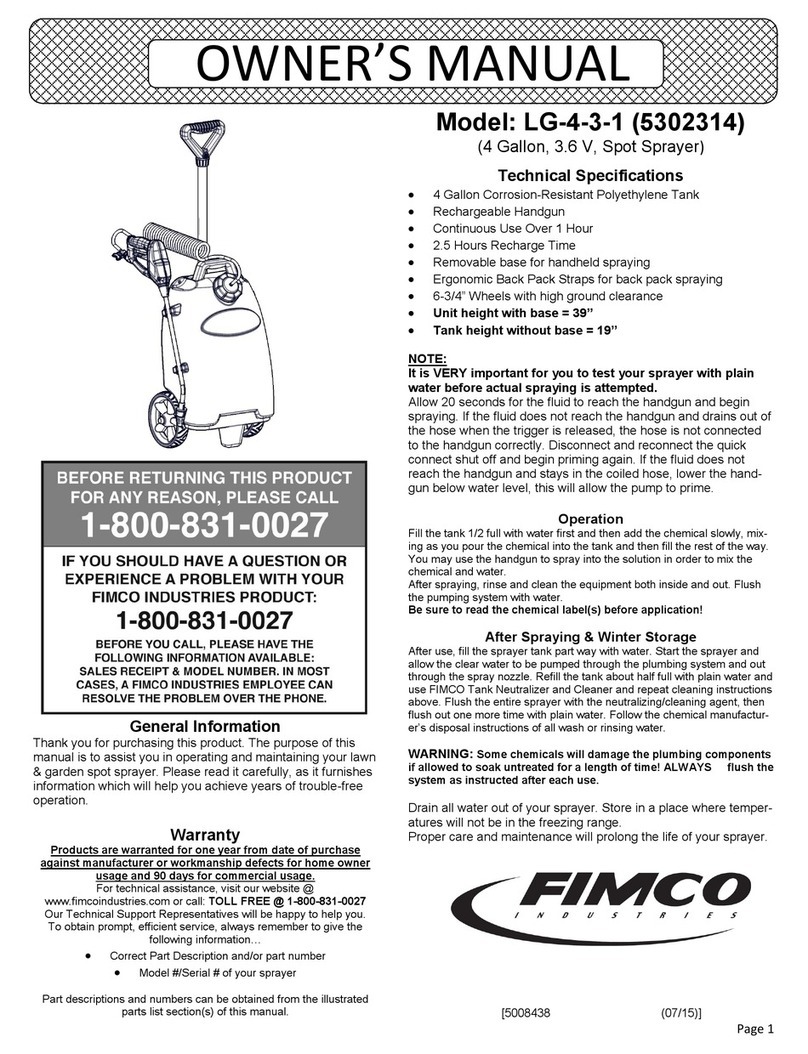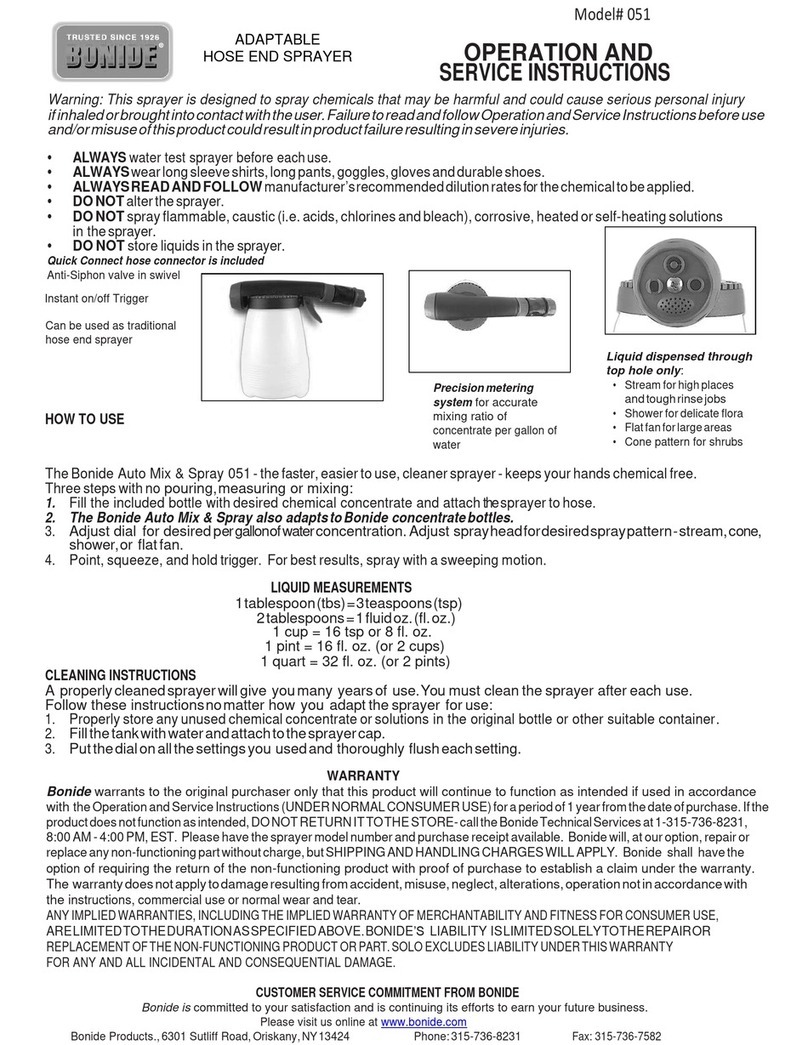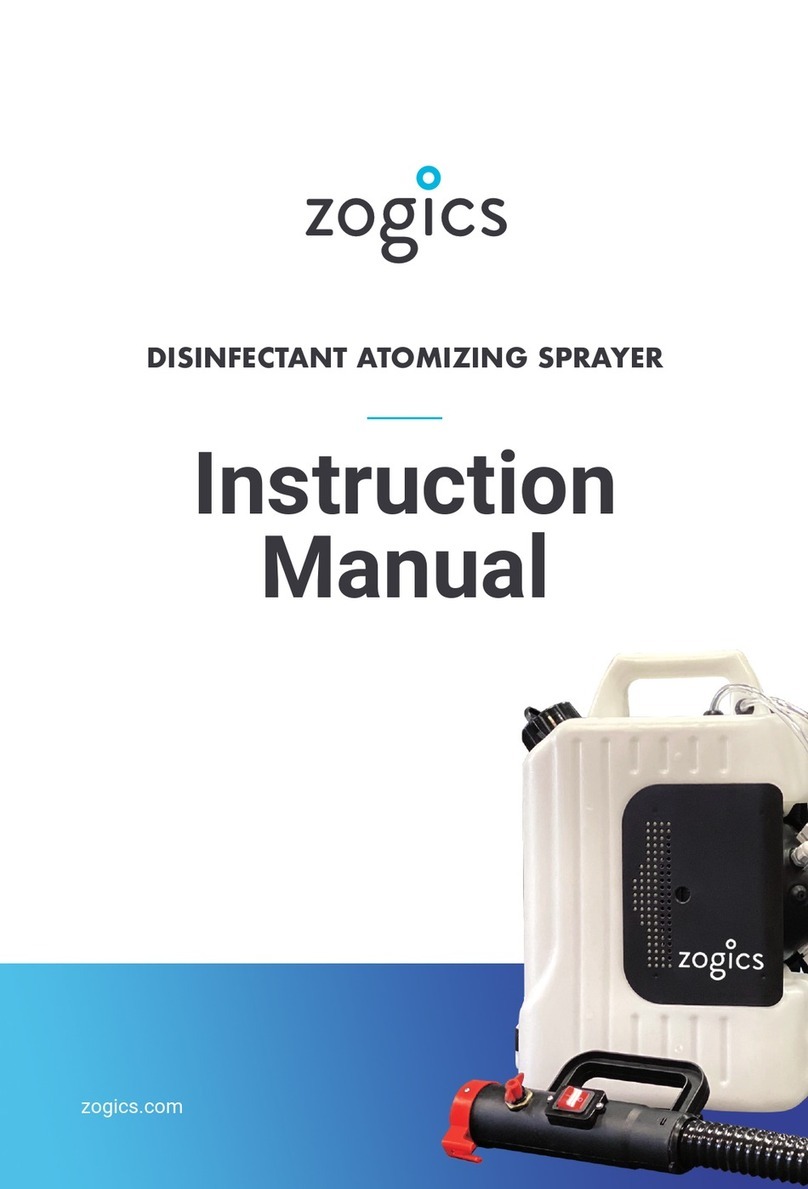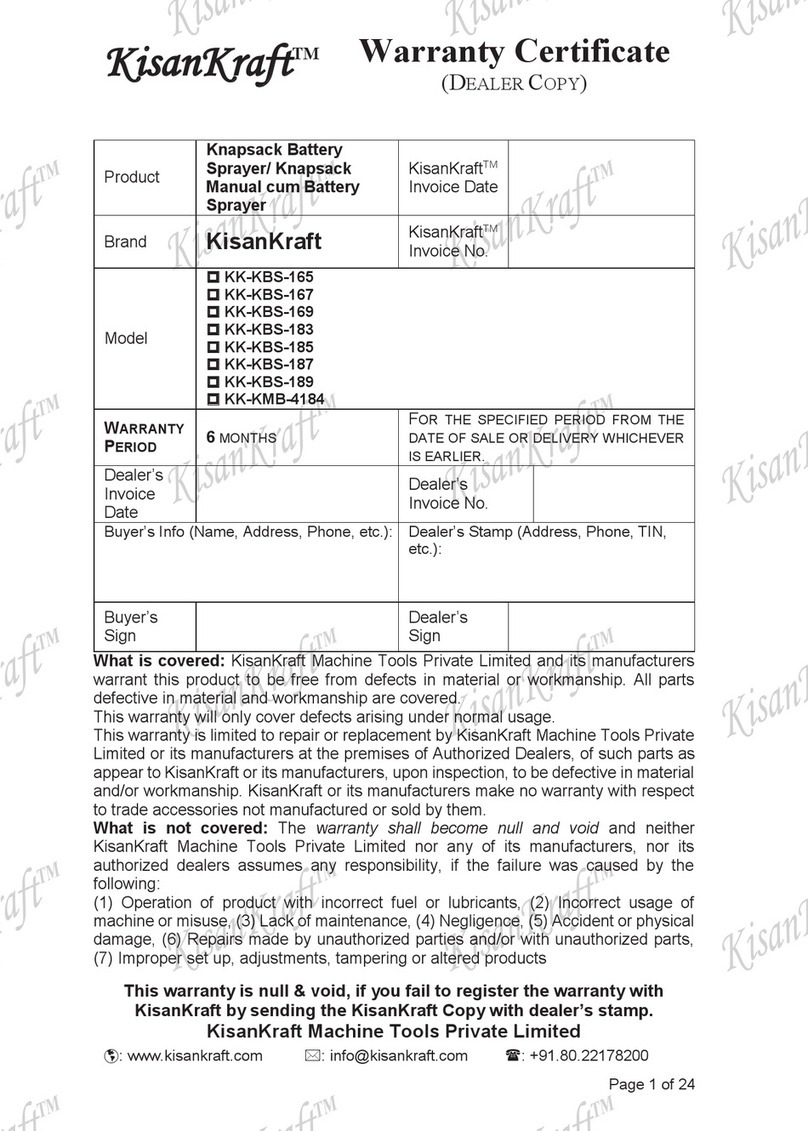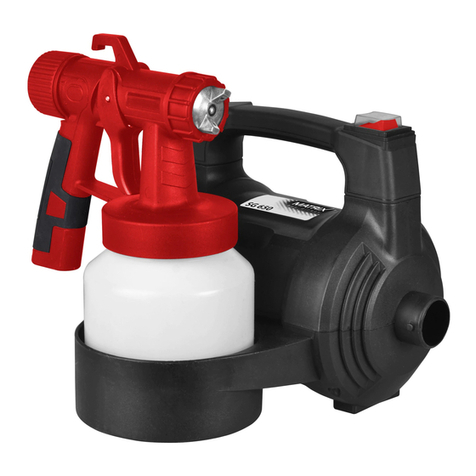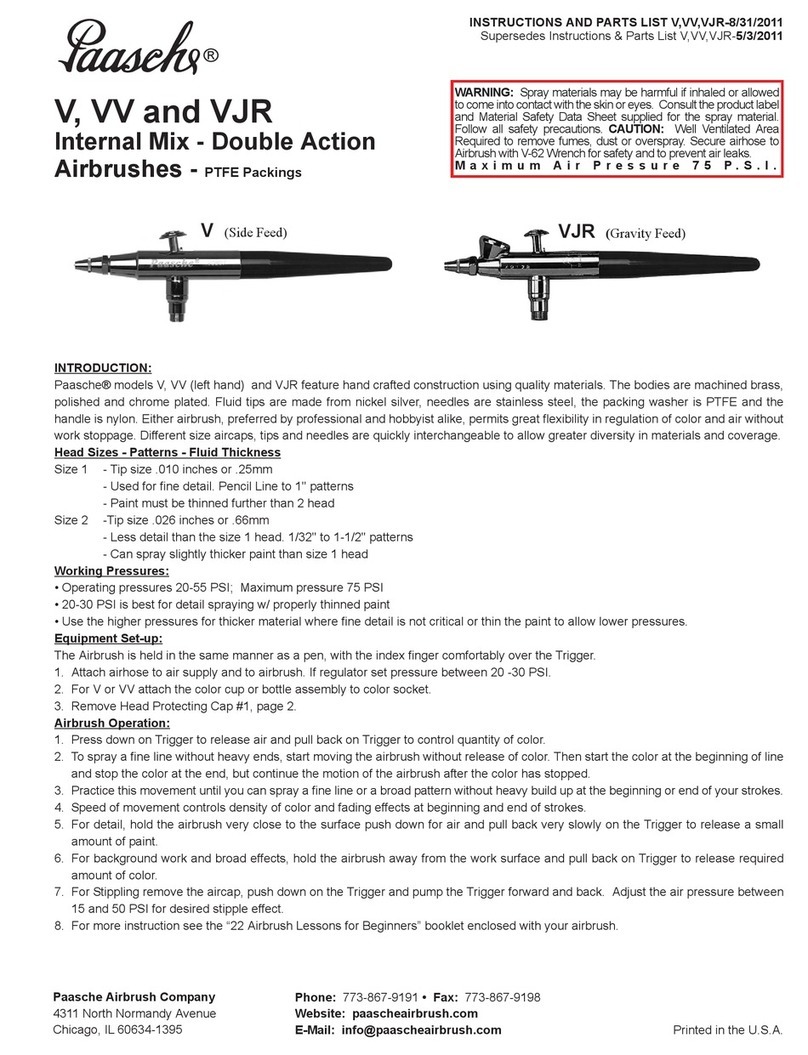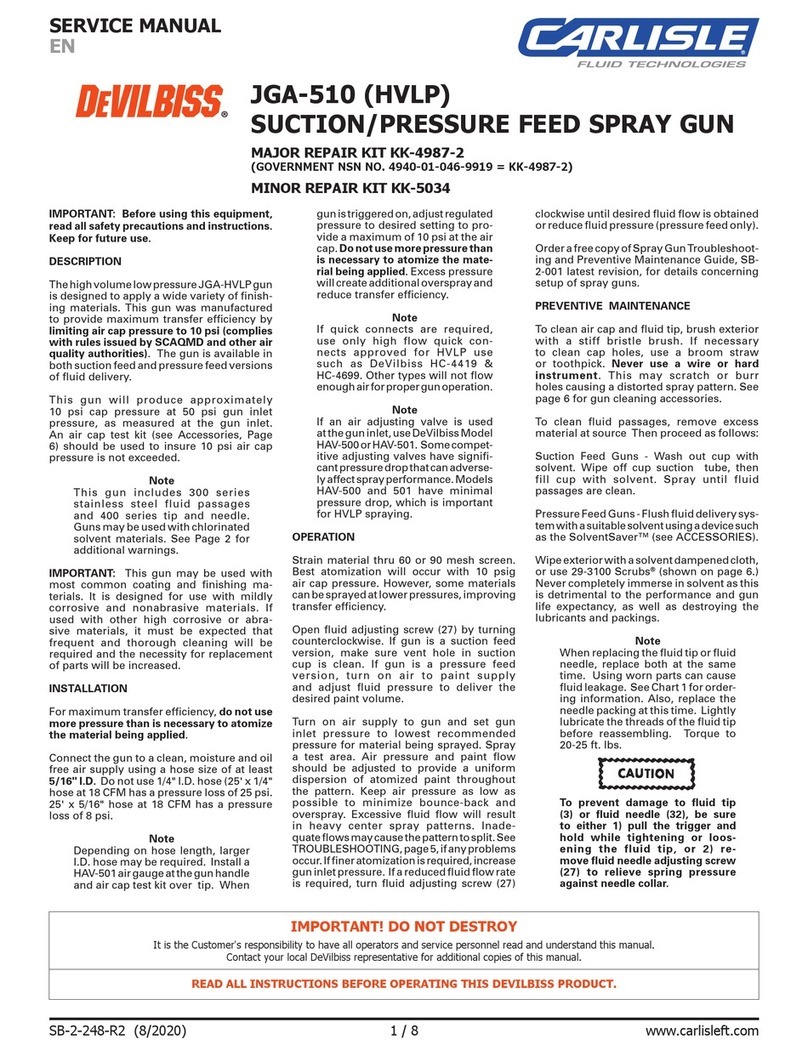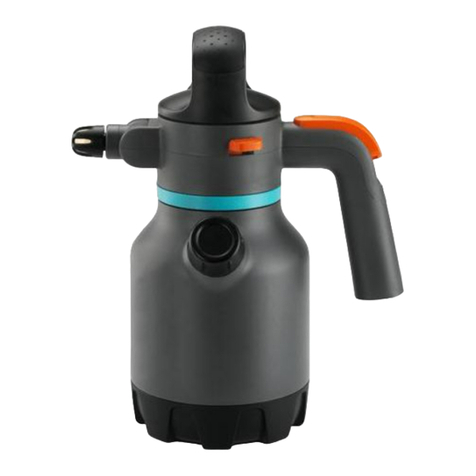
9
The formula below gives the relationship between swath width, flow rate, walking
speed and total spray volume:
Flow rate (ml/min) = 6 x total spray volume (l/ha) x walking speed (m/s) x band width (m)
The table below gives examples of feed nozzle selection and walking speed to
achieve desired total volume application rates.
These values have been measured using water only. Actual flow rates will depend on
the viscosity of the spray liquid used and the angle at which the operator holds the
sprayer. Before spraying, therefore, the HANDY should be calibrated by the operator
for the spray mix being used.
CALIBRATION
To calibrate the HANDY remove the atomiser disc (see ‘AFTER SPRAYING’) and
collect and measure the volume of spray liquid dispensed in one minute with the
sprayer held in the normal “head down” spraying position (see ‘TO START SPRAY-
ING’). As the balance of the machine and hence angle at which it is held will vary as
the spray bottle empties, an average flow rate will be obtained if measured with the
bottle half full.
It may be necessary to fit a different feed
nozzle to obtain the desired flow rate. To
change the nozzle, pull off the feed tube and
remove the two screws which hold the nozzle
in position. Alternative nozzles are located in
slots in the battery case clamp. These are
colour coded according to flow rate. Select
the colour needed and screw into place.
Blue Yellow Red
Orange
Increasing flow rate
Once the flow rate for a particular feed nozzle has been determined, walking speed
should be adjusted to achieve the required spray volume.
In general it is preferable to walk more slowly to achieve the required spray volume
than to use higher flow rates.
Total spray volume
(l/ha)
Band width
(m)
Feed nozzle
Flow rate
(ml/min)
Walking speed
(m/sec)
10 (i.e. glyphosate)
1
Blue
70
1.2
20 (i.e. other herbicides)
1
Orange
180
1.5
Example: required spray volume rate = 20 l/ha Flow rate measured = 150 ml/min
Walking speed (m/s) = Flow rate (ml/min) = 150 = 1.25
6 x 1 x total spray volume (l/ha) 6 x 20





